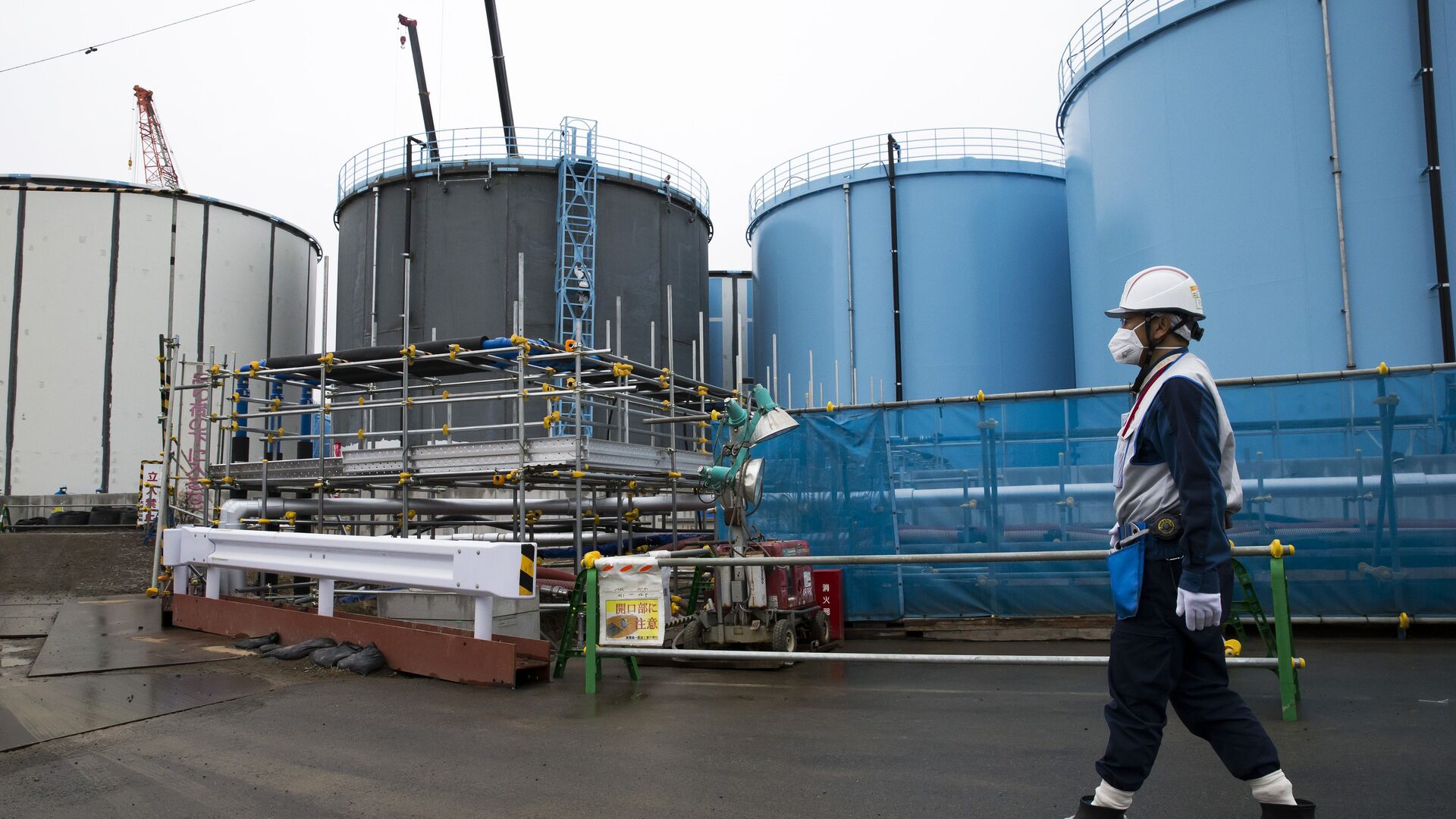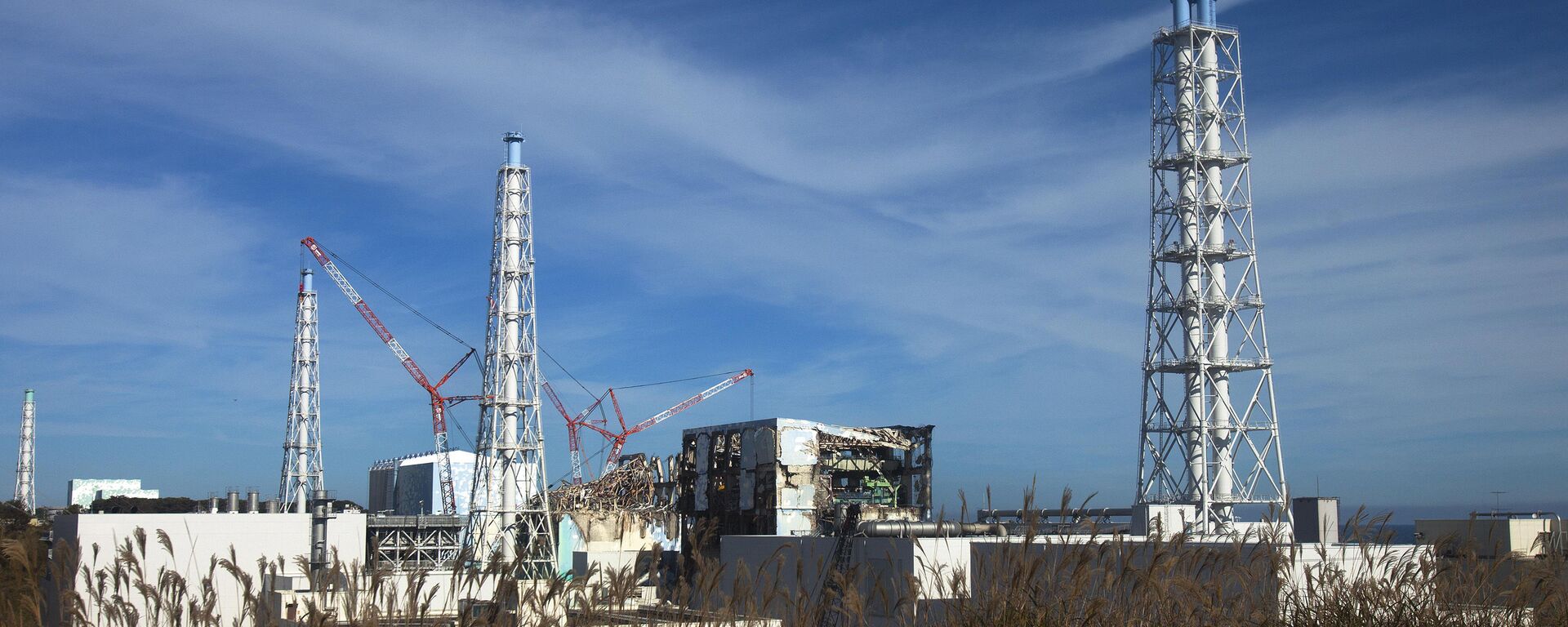https://sputnikglobe.com/20230606/system-for-water-release-at-japans-fukushima-npp-to-be-completed-in-june---reports-1110948382.html
System for Water Release at Japan's Fukushima NPP to Be Completed in June - Reports
System for Water Release at Japan's Fukushima NPP to Be Completed in June - Reports
Sputnik International
The TEPCO company, which is in charge of decommissioning Japan’s damaged Fukushima nuclear power plant (NPP), plans to complete the construction of the tunnel for releasing treated water into the ocean before the end of June, Japanese media has reported.
2023-06-06T12:32+0000
2023-06-06T12:32+0000
2023-07-31T17:00+0000
asia
japan
international atomic energy agency (iaea)
tepco
nuclear power plant
fukushima
https://cdn1.img.sputnikglobe.com/img/105124/55/1051245593_0:168:4000:2418_1920x0_80_0_0_2cb033e47d090f20d80b780024b1d77b.jpg
Initially, Japan planned to discharge water purified from all radionuclides except for tritium into the ocean 1 kilometer (0.6 mile) off the station starting this spring. However, the deadline was postponed to the summer of 2023 due to unfavorable weather conditions and other delays. The system is almost complete, as the tunnel for the discharge of water was finished in April, the NHK broadcaster reported on Monday. The only thing left to build is a reservoir for treated water. TEPCO employees started filling the tunnel with sea water on Monday, according to the report. By Tuesday afternoon, it will be filled with 6,000 tonnes of sea water in order to mix it then with low-level radioactive water for the subsequent release. In January, the International Atomic Energy Agency (IAEA) completed an inspection of Japan's Fukushima nuclear power plant as part of an assessment of the Japanese operator's plan for wastewater discharge. The nuclear disaster at the Fukushima NPP occurred on March 11, 2011. The plant was heavily damaged following a magnitude 9 earthquake in the Pacific Ocean. This triggered a massive tsunami that hit the plant and caused three nuclear reactors to melt down. The accident is regarded as the worst nuclear disaster since the 1986 Chernobyl accident, resulting in the large-scale contamination of local soil and water. The disaster resulted in 22,200 people dead or missing.
https://sputnikglobe.com/20230516/fukushima-greets-summer-with-dread-as-nuclear-contaminated-wastewater-dumping-approaches-1110402649.html
japan
fukushima
Sputnik International
feedback@sputniknews.com
+74956456601
MIA „Rossiya Segodnya“
2023
Sputnik International
feedback@sputniknews.com
+74956456601
MIA „Rossiya Segodnya“
News
en_EN
Sputnik International
feedback@sputniknews.com
+74956456601
MIA „Rossiya Segodnya“
Sputnik International
feedback@sputniknews.com
+74956456601
MIA „Rossiya Segodnya“
japan, fukushima, tepco company, fukushima nuclear power plant, contaminated wastewater dumping, wastewater contains radionuclides
japan, fukushima, tepco company, fukushima nuclear power plant, contaminated wastewater dumping, wastewater contains radionuclides
System for Water Release at Japan's Fukushima NPP to Be Completed in June - Reports
12:32 GMT 06.06.2023 (Updated: 17:00 GMT 31.07.2023) MOSCOW (Sputnik) – The TEPCO company, which is in charge of decommissioning Japan’s damaged Fukushima nuclear power plant (NPP), plans to complete the construction of the tunnel for releasing treated water into the ocean before the end of June, Japanese media has reported.
Initially, Japan planned to discharge water purified from all
radionuclides except for tritium into the ocean 1 kilometer (0.6 mile) off the station starting this spring. However, the deadline was postponed to the summer of 2023 due to unfavorable weather conditions and other delays.
The system is almost complete, as the tunnel for the discharge of water was finished in April, the NHK broadcaster reported on Monday. The only thing left to build is a reservoir for treated water.
TEPCO employees started filling the tunnel with sea water on Monday, according to the report. By Tuesday afternoon, it will be filled with 6,000 tonnes of sea water in order to mix it then with low-level radioactive water for the subsequent release.
In January, the International Atomic Energy Agency (IAEA) completed an inspection of Japan's Fukushima nuclear power plant as part of an assessment of the Japanese operator's plan for wastewater discharge.
The nuclear disaster at the Fukushima NPP occurred on March 11, 2011. The plant was heavily damaged following a magnitude 9 earthquake in the Pacific Ocean. This triggered a massive tsunami that hit the plant and caused three nuclear reactors to melt down. The accident is regarded as the worst nuclear disaster since the 1986 Chernobyl accident, resulting in the large-scale contamination of local soil and water. The disaster resulted in 22,200 people dead or missing.



